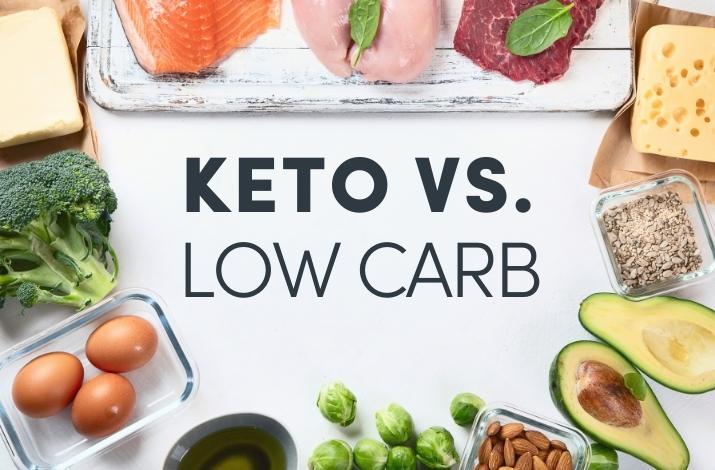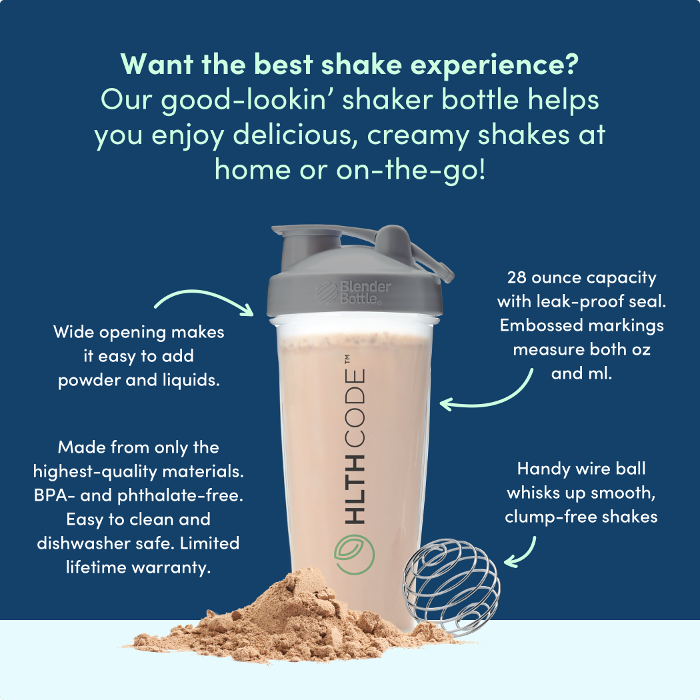What is the Difference Between Keto and Low Carb Diets?

If you’re looking to make positive changes to your health, chances are you’ve come across the ketogenic and low carb diets. The keto diet is one of the most popular diets in the world, and the low carb diet isn’t too far behind it. The two ways of eating have a lot of similarities and some important differences.
While both are great for health, your needs and goals will determine which diet is right for you.
Ketogenic Diet
Protein, fat, and carbohydrates are known as macronutrients, the main nutrients that make up a diet. They’re components the body needs to maintain its structure and systems and act as sources of energy. The keto diet heavily restricts carbohydrates in favor of fat because the diet focuses not just on macronutrients, but on the effect those macros have on the body.
Ketogenic diets keeps insulin–a hormone profoundly linked to weight gain–low by keeping insulin-spiking carbs below 50g/day[1]. Many people even restrict further to 20g/day, particularly when starting out. A common breakdown of the macros in a keto diet is 70% fat, 20-25% protein, and 5-10% carbs. Keto diets put the body in a state of ketosis (not to be confused with ketoacidosis), which allows the body to use dietary fat and its own stored fat as fuel. As such, a ketogenic diet is extremely popular for those looking to lose weight, although the benefits go far beyond a number on a scale. In the 1920s, a ketogenic diet was found to benefit children with epilepsy, and since then, they’ve been used to aid with a host of other ailments, including migraines, PCOS, diabetes, alzheimer’s, and more [2,3].
One concern that many have in starting out on a keto diet is the dreaded keto flu. While this can be difficult, the keto flu is by no means insurmountable. Even simple practices like upping your electrolytes (hello salt!) can help stave off symptoms.
A growing trend in the keto community is to incorporate more protein into the diet, with a 1:1 mass ratio of fat and protein. This ratio matches that of some of the most nourishing foods in nature, like dairy and eggs. Importantly, this ratio is also similar to that used in several human clinical studies that reveal significant improvements in cardiometabolic health, including insulin resistance, dyslipidemia, hypertension, and more [4,5,6,7,8,9]. By favoring fat and protein and avoiding carbohydrates, this balance of macronutrients allows for a bit more flexibility and variety in the diet while remaining keto friendly.
Some people feel that moderation is easier to maintain than the kind of restriction that keto diets demand, yet many others find that avoiding certain foods altogether is the key to their success. If you’ve learned from experience that even a few bites of bread are enough to derail your willpower altogether, then a ketogenic diet may be ideal for you.
Additionally, some who start out eating keto are thrilled with the quick health and weight improvements, but they find it hard to maintain when weight plateaus, and some will return to their old carb-filled diet. This all-or-nothing mindset isn’t just counterproductive, it’s unnecessary. If you’re looking for more flexibility but are still committed to your health, another option exists.
Low Carbohydrate Diet
In the past several years, low carbohydrate diets have increased in popularity, as they’ve been shown to be wildly effective [10,11]. While there isn’t a specific definition of “low carb”, it is often associated with a diet of below 130g of carbs per day. Because the goal isn’t to remain in a state of ketosis, a macro breakdown may look like 40-50% of calories from protein, 30-40% from fat, and 10-25% from carbs, although the fat and protein percentages will vary from person to person. People who eat low carb report more satiety and fewer cravings than on traditional diets [12]. Low carb diets work via the same mechanism as ketogenic diets: they keep insulin low by restricting carbs. In controlling carbs, people on a low carb diet prioritize protein and don’t fear fat. A general low carb diet offers more flexibility for many people looking to live a healthy lifestyle but without the need or desire to consistently be in ketosis. That isn’t to say that someone on a low carbohydrate diet will never be in ketosis–depending on the timing of when someone eats carbs, for instance, they could be in ketosis often–but their bodies won’t remain in that state as it will for someone who eats strict keto.
People who eat low carb may do so strategically, focusing on “slow carbs” like berries, leafy greens, and ancient grains over rapidly digested starches (like pre-packaged carbs) that spike insulin and wreak havoc on the body. Another popular strategy for low carb dieters is to time their carbs. Whether or not they also employ intermittent fasting in their lifestyle (a common strategy in both keto and low carb eating), they restrict their carbs at breakfast and lunch and then just eat a regular, nutritious meal for dinner without needing to count their carbs. By allowing the body more time between carbs, this practice capitalizes on keeping insulin low for as long as possible while also allowing people to enjoy dinner with family who may not be on board with a more restrictive diet.
Both diets offer plenty of weight and health benefits, so if you’re looking to make a change, consider your goals, whether carb-moderation or carb-restriction is easier for you to sustain, and how either diet could fit into your lifestyle. Remember, a diet isn’t just about a few (or more) pounds, it’s about your long-term health.
References
- https://www.nature.com/articles/nature05482
- Tinguely D, Gross J, Kosinski C. Efficacy of Ketogenic Diets on Type 2 Diabetes: a Systematic Review. Curr Diab Rep. 2021 Aug 27;21(9):32. doi: 10.1007/s11892-021-01399-z. PMID: 34448957; PMCID: PMC8397683.
- Broom GM, Shaw IC, Rucklidge JJ. The ketogenic diet as a potential treatment and prevention strategy for Alzheimer’s disease. Nutrition. 2019 Apr;60:118-121. doi: 10.1016/j.nut.2018.10.003. Epub 2018 Oct 10. PMID: 30554068.
- Vandenberghe, C., et al., Medium Chain Triglycerides Modulate the Ketogenic Effect of a Metabolic Switch. Front Nutr, 2020. 7: p. 3.
- Sharman, M.J., et al., A ketogenic diet favorably affects serum biomarkers for cardiovascular disease in normal-weight men. J Nutr, 2002. 132(7): p. 1879-85.
- Volek, J.S. and M.J. Sharman, Cardiovascular and hormonal aspects of very-low-carbohydrate ketogenic diets. Obes Res, 2004. 12 Suppl 2: p. 115S-23S.
- Hall, K.D., et al., Energy expenditure and body composition changes after an isocaloric ketogenic diet in overweight and obese men. Am J Clin Nutr, 2016. 104(2): p. 324-33.
- Walsh, C.O., et al., Effects of diet composition on postprandial energy availability during weight loss maintenance. PLoS One, 2013. 8(3): p. e58172.
- Westman, E.C., et al., Low-carbohydrate nutrition and metabolism. American Journal of Clinical Nutrition, 2007. 86(2): p. 276-284.
- https://www.ncbi.nlm.nih.gov/books/NBK537084/#article-38819.s7
- https://www.healthline.com/nutrition/why-do-low-carb-diets-work
- Hu T, Yao L, Reynolds K, Niu T, Li S, Whelton P, He J, Bazzano L. The effects of a low-carbohydrate diet on appetite: A randomized controlled trial. Nutr Metab Cardiovasc Dis. 2016 Jun;26(6):476-88. doi: 10.1016/j.numecd.2015.11.011. Epub 2015 Dec 12. PMID: 26803589; PMCID: PMC4873405.
This article is for informational and educational purposes only. It is not, nor is it intended to be substitute for professional medical advice, diagnosis, or treatment and should never be relied upon for specific medical advice.



















